
DONETSK AND KHARKIV REGIONS, eastern Ukraine — The Ukrainian officer’s urgent and profanity-laced plea crackled over the radio: “We need artillery support!”
His infantry troops were under attack on the frontline and they needed help, could the mechanized troops hit the enemy?
Commander “Topaz,” a little more than two miles away, responded in the affirmative and shouted to platoon leader “Horizon” to ready the howitzers.
Moments later, crews scrambled among the dense brush onto two self-propelled Ukrainian 2S1 Gvozdikas, or Carnations, and loaded them with 122mm shells. Using a touchscreen device, Horizon checked the coordinates of their Russian targets obtained from satellite images and drone footage, kneeled, and then yelled the order: “Fire!”
Two muzzles jutting from camouflaged turrets each belched out a round as clouds of smoke dissipated into the air.
In just a few minutes, the guns fired six more times. There was an uneasy silence between each shot when just the wind could be heard rustling the grass, and then came the roar of explosions on Russian infantry and armored vehicles in the distance.
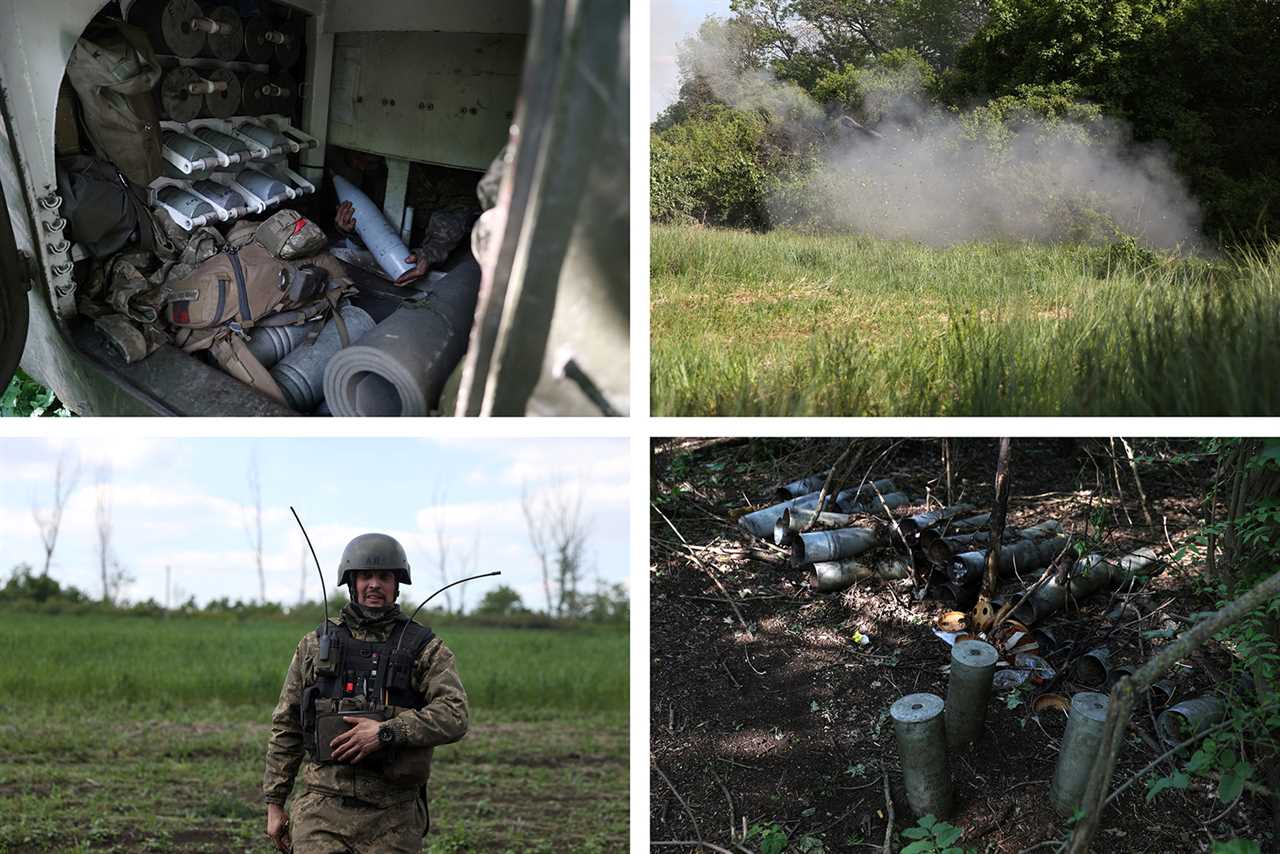
“Wasted,” Horizon declared, rising confidently from the hilltop.
His artillerymen rushed to cover the Soviet-era weapons with tree branches to hide them from Russian drones that he said would inevitably come looking for their positions before returning fire. “Hurry!” one of the soldiers shouted.
During an artillery duel two days prior, a drone had loitered overhead — a few minutes later Russian shells were raining down on them. “A whole battery was working on us,” said Horizon. They hadn’t been hit since. “I think maybe we already fucked them up,” he added, with a grin and the braggadocio of a soldier with several heavy weapons at his disposal.
Even so, with Russia’s deep reserves, others would soon take their place.
Here, in the wide expanse of Ukraine’s eastern steppe, heavy weapons are the defining feature of this new phase of the Russo-Ukrainian war. The conflict has ground into a long-range shooting war across the vast gullies and rolling hills, snaking rivers and slag heaps that protrude like miniature mountains in this heavily industrialized area. It’s tricky to advance quickly here and soldiers on both sides rarely — if ever — see each other up close. And so whoever plays the cat-and-mouse artillery game best — and has the biggest guns and most shells to do so — is likely to come out the victor.
Right now, Russia appears to have the upper hand.
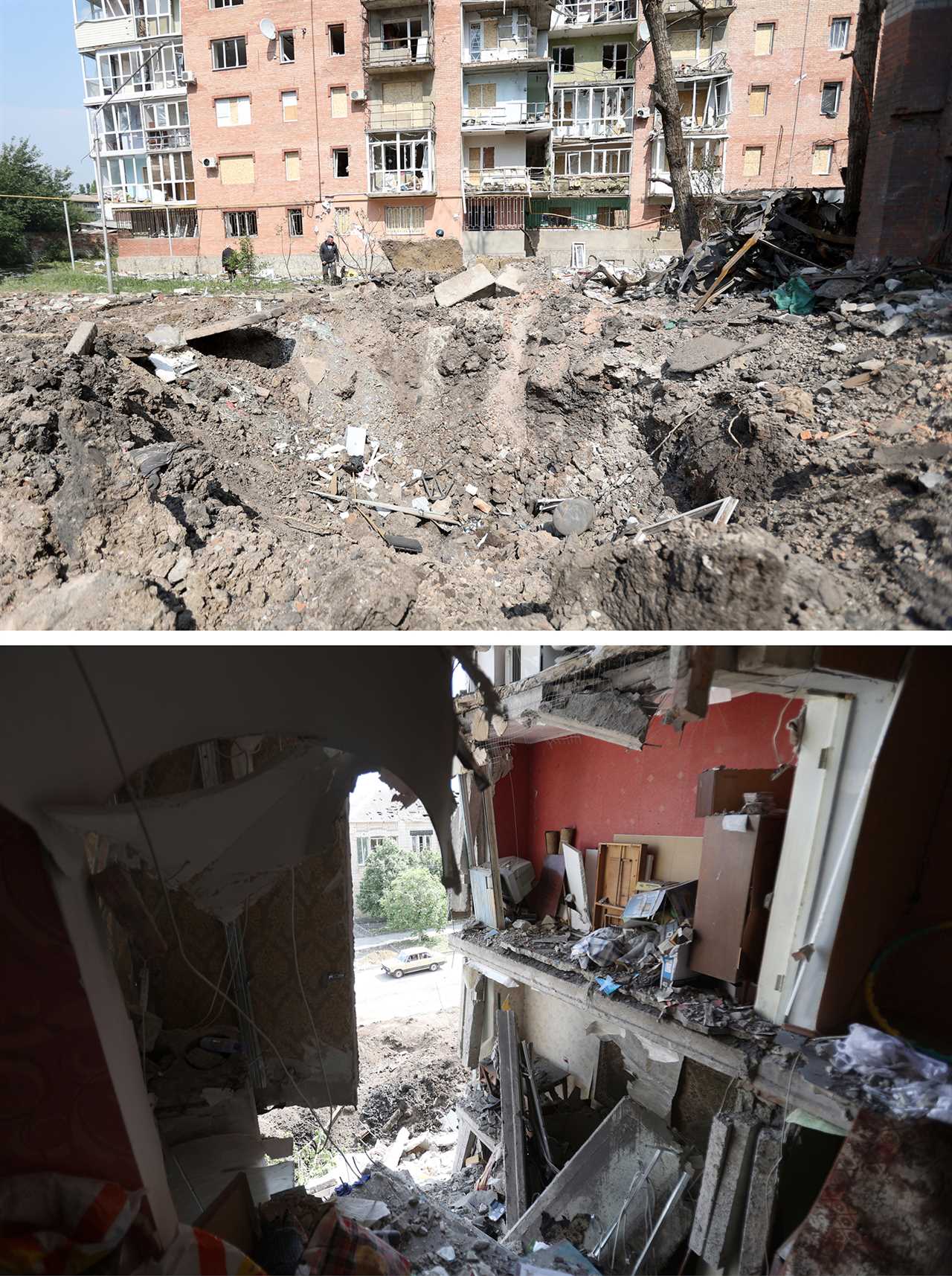
‘We can win’
Moscow’s forces are making incremental steps deeper into Ukrainian territory each day. Last week, Russian troops captured the towns of Lyman, a key rail hub in northern Donetsk region, and Svitlodarsk 50 miles southeast, where Ukrainian troops were forced to retreat. Russian soldiers have tried to break through Ukrainian lines below Izyum in the southern Kharkiv region in order to complete a pincer movement that includes a push north from territory under their control around Donetsk and its periphery.
If they succeed, Ukrainian forces will be surrounded.
But Kyiv hopes the momentum will soon change in its favor with the arrival of NATO weaponry and munitions.
“If it gets here quickly we can push them back. In fact, we can win,” Topaz said. Officials in Kyiv, including President Volodymyr Zelenskyy, have been less upbeat in recent days. He called the fight in the east “hell” and pleaded with the West to rush heavy weapons to his country.
After failing to capture major cities like Kharkiv and Kyiv and decapitate Ukraine’s government with airborne special operations forces in March, President Vladimir Putin switched tactics and redeployed troops to the eastern Donetsk and Luhansk regions with the more limited, immediate goal of seizing the areas that remain under Ukrainian control.
Before the latest invasion on Feb. 24, Russia had already occupied a swathe of territory roughly the size of New Jersey. The presence of Russian forces there since 2014 has given them a strong position from which to launch its latest assaults.
With artillery superiority, Russian forces are pounding Ukrainian troops and pulverizing everything else in their way with massive barrages around the clock in an effort to surround and capture strategic cities in the East of Ukraine, colloquially known as the Donbas.
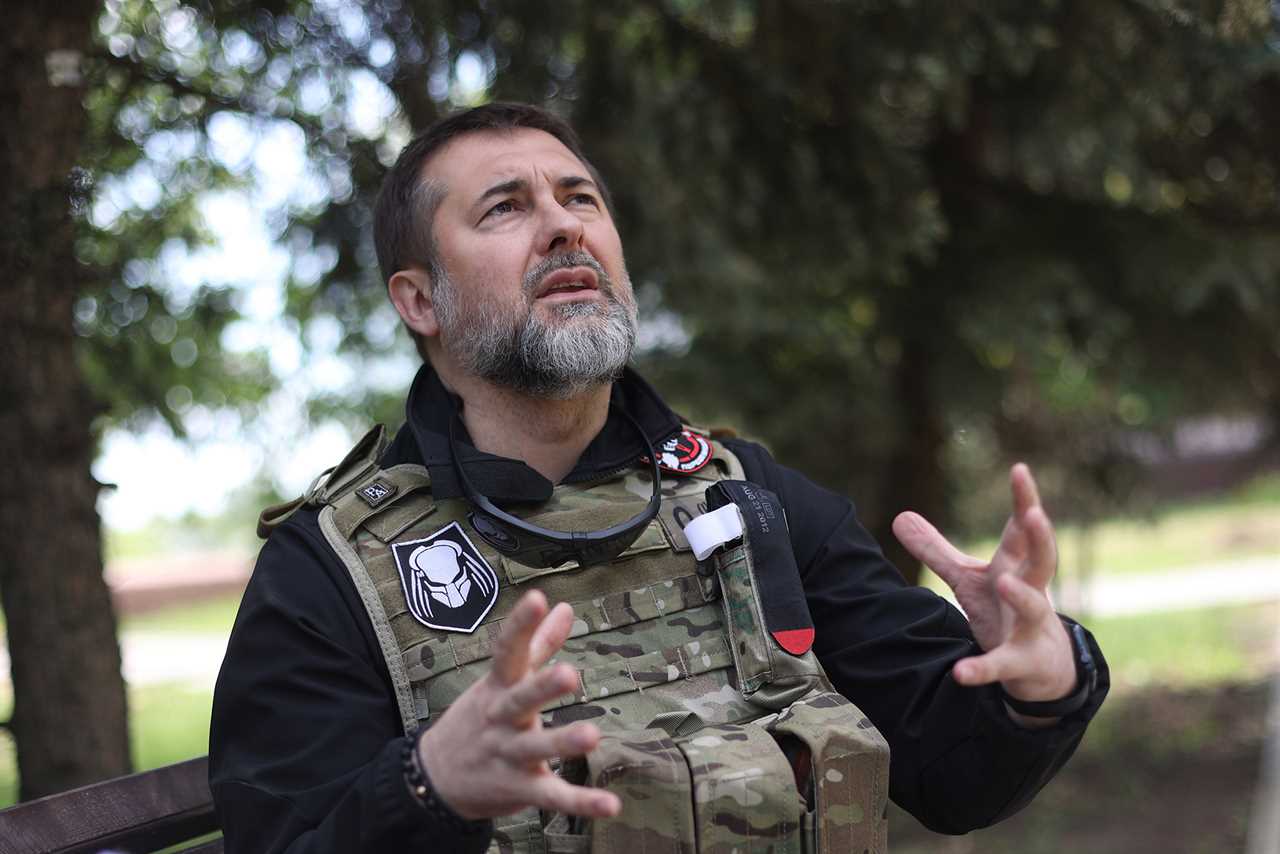
“They are carpet-bombing us. The cities they attack are simply being erased from the face of the earth,” said Serhiy Haidai, the head of the Luhansk regional military government. Donning full combat gear and flanked by an armed guard, he spoke to POLITICO on a park bench in the frontline city of Bakhmut last week, 40 miles southwest of his hometown of Severodonetsk, a strategic regional hub that now finds itself square in Russia’s crosshairs.
Moscow’s forces entered the city this week, took up positions inside hotels and residential blocks, and engaged with Ukrainian forces in street fights. Russian state media and pro-Kremlin bloggers claimed their forces had taken control of all of Severodonetsk over the weekend but that declaration seems to be premature. The siege, however, is proceeding with a grinding barbarity.
“They are destroying everything and then moving through the ruins,” Haidai said.

Trapped in the pincer
Russian forces have bombarded the last road into the city from Ukrainian-controlled territory, making it nearly impossible for the roughly 13,000 remaining civilians trapped in the crossfire to escape, or for military reinforcements to get in. Evacuations of civilians from Severodonetsk on Monday were halted after a French journalist working for BFMTV was killed by a piece of artillery shrapnel that struck him in the neck. Another BFMTV journalist was slightly wounded.
In recent days, Ukrainian officials have openly floated the prospect of a strategic withdrawal from what they refer to as a cauldron that’s formed in the remaining area of the Luhansk region under their control. A crescent of Russian troops is bearing down on them from the north, south and east. The move would prevent Ukrainian troops from being encircled and captured as they were in Mariupol and potentially allow them to regroup to shift resources to stronger positions.
Some soldiers told POLITICO they believed a strategic withdrawal would not have been considered or necessary had Western weapons arrived in the East sooner.
POLITICO met soldiers and territorial defense forces at a hillside near the northwestern edge of Bakhmut where potential fallback positions and fresh trenches were being established. From that vantage point, black smoke from artillery attacks could be seen across the horizon. Volodymyr Yelets, a volunteer fighter from the eastern city of Toretsk, looked on with concern, accompanied by his dog Taco. “They’re getting closer,” he said, adding that Bakhmut had been hit by three missiles just an hour earlier. “Once they’re close enough to use artillery, the city is screwed.”
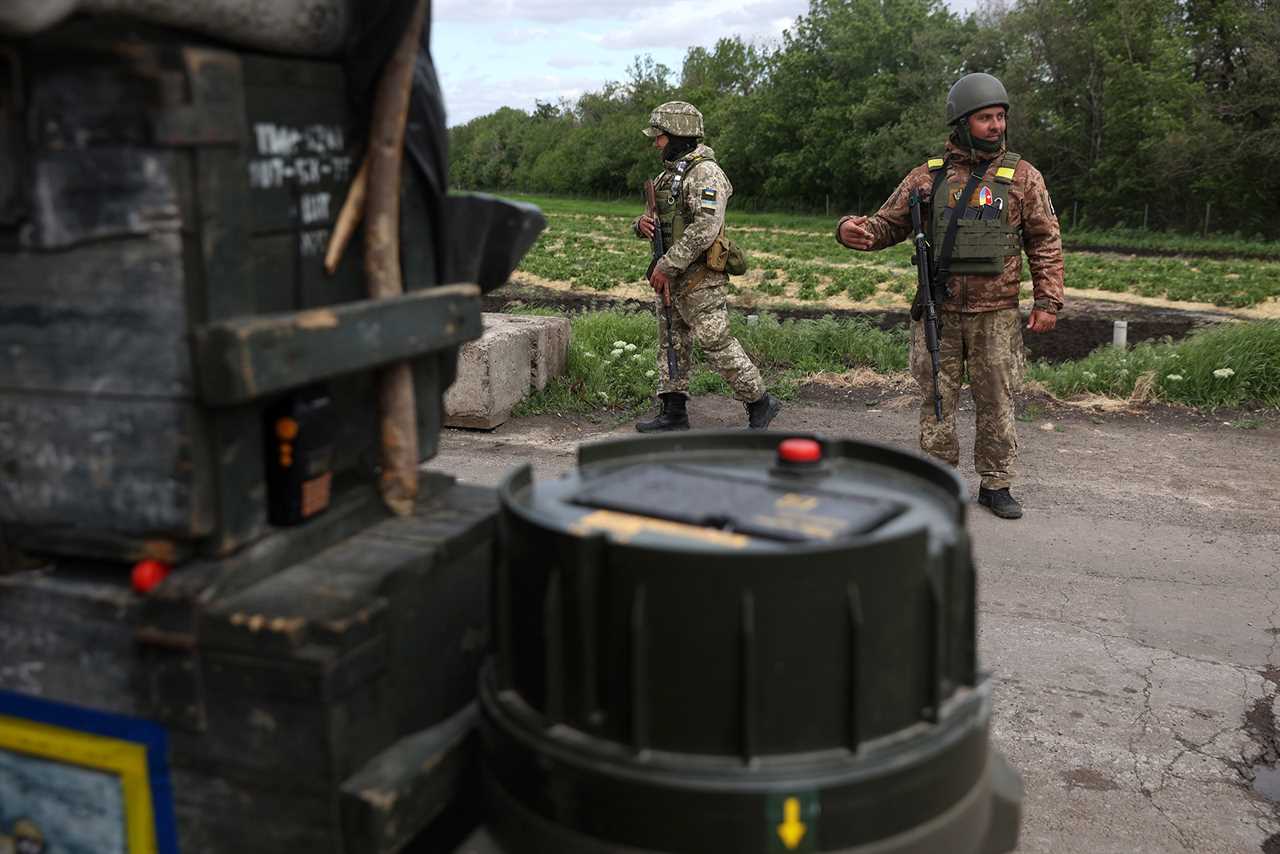
Haidai, who admitted to sleeping little and living on the move now, said Thursday that Russian shelling in Severodonetsk had killed some 1,500 residents and wiped out more than 60 percent of the city in recent weeks; about 95 percent of the Luhansk region is now occupied by Russian forces.
“They are destroying Severodonetsk, they are shelling it all the time with everything they have. And in this way they destroy cities so much that it is no longer possible for an army to gain a foothold there,” Haidai told POLITICO. And if they can either capture Severodonetsk or block the Lysychansk-Bakhmut highway, it will be a victory for them.”
The Institute for the Study of War, which tracks the conflict, wrote on Monday that “Russian forces continued to incrementally capture areas of Severodonetsk but have not yet fully encircled the city.” Ukraine’s General Staff said Russia was still conducting “assault operations” in the city, suggesting it had not yet taken full control.
The Russians have been able to make the type of gains on the ground here that they failed to achieve around Kyiv, albeit at a slower pace than preferred, because of the sheer amount of resources they’ve dedicated to the battle and the lack of sufficient firepower on the Ukrainians’ side, according to Ukrainian officials, commanders in the field and Western analysts.
Zelenskyy said last week that Russian troops outnumber Ukrainian soldiers in the East seven to one, and as many as 100 Ukrainian troops are being killed in action daily.
Ukraine and Russia have been tight-lipped about their military losses in the war. Kyiv claims to have killed about 30,500 Russian troops, a figure that can’t be independently verified; Moscow said in March — the last time it released casualty figures — that 1,351 of its troops had been killed. Zelenskyy said in April that 2,500-3,000 Ukrainian servicemen had died defending their country; Russia puts the number over 20,000, a claim that also cannot be independently verified.
“The situation in Donbas is very difficult. The occupiers are trying to achieve by day 100 of the war the goals they hoped to achieve in the first days after Feb 24,” he said in his regular late-night address on Friday. “So they’ve concentrated maximum artillery, maximum reserves in the Donbas. There are missile strikes and aircraft attacks — everything.”
“We are defending our territory in the way that our current defense resources allow. We are doing everything to increase them — and we will increase them,” he added with a sense of desperation in his voice.
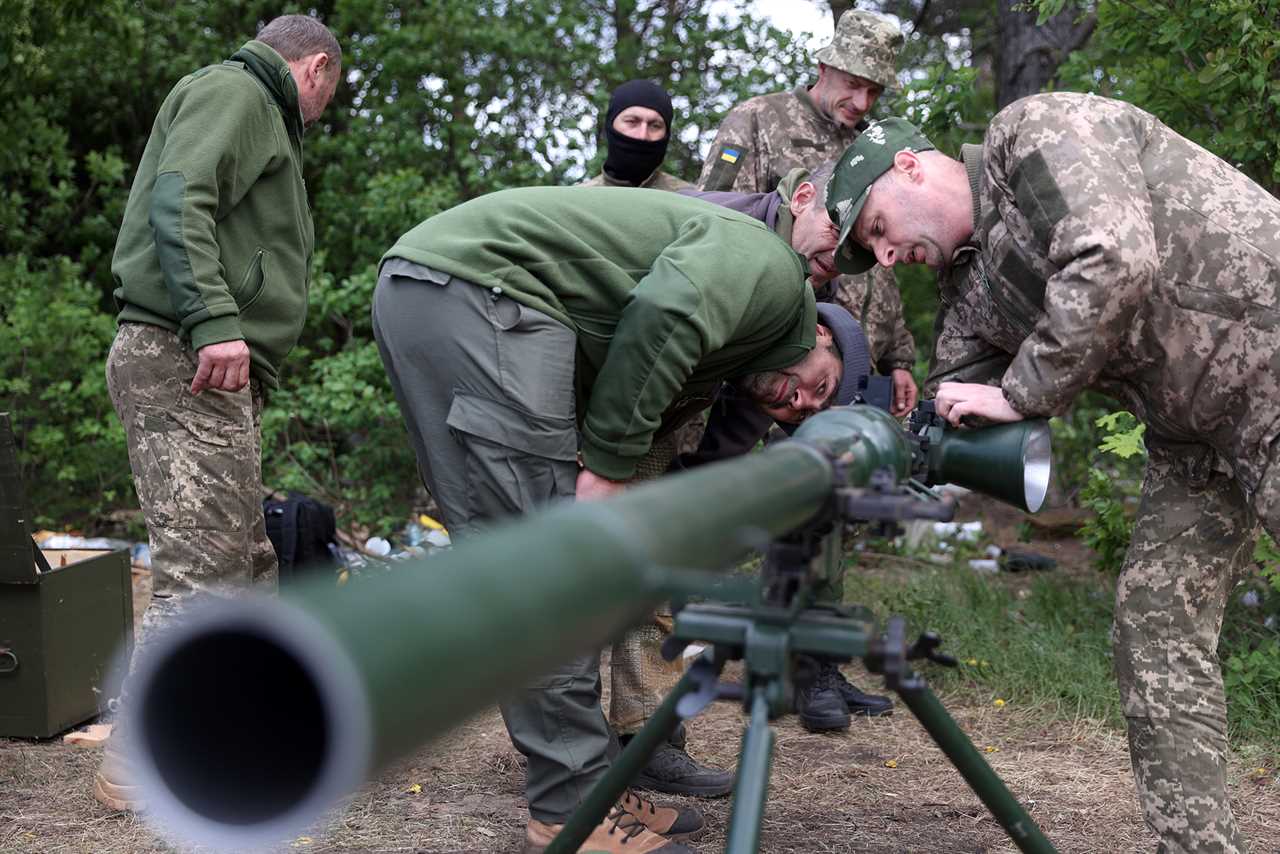
A bonanza of Western weapons
In what Kyiv hopes will be a game-changer, modern arms and munitions from NATO allies started streaming into the region this month. On Tuesday, President Joe Biden committed to sending Ukraine new rocket launchers and precision-guided munitions.
“Western weapons and equipment are helping us to drive the enemy out of our land,” Valeriy Zaluzhnyy, the commander in chief of the Ukrainian Armed Forces, wrote on Telegram last week. But he said more was still needed. “At the same time, we are in dire need of weapons that will be able to hit the enemy at a great distance,” he continued. “And this cannot be delayed, because the price of the delay is measured by the lives of people who have protected the world from [Russian fascism].”
With what they already have, the Ukrainians say they’re starting to see results. American M777 howitzers, British FH70 howitzers, and French CAESAR self-propelled howitzers, along with NATO-standard artillery shells, are all now being used by Ukraine’s military on the frontline in the Donbas, said Defense Minister Oleksiy Reznikov.
“The Russian occupiers are receiving a rebuff they did not expect,” he wrote Saturday on Facebook.
Anatoliy, a commander of a Ukrainian artillery unit using two of the 108 M777s Washington has sent to the fight — and who like other soldiers interviewed asked that his surname not be published for security reasons — told POLITICO that the NATO weapons will allow Kyiv’s forces to pivot from defense to offense as they move to recapture lost ground in the coming weeks.
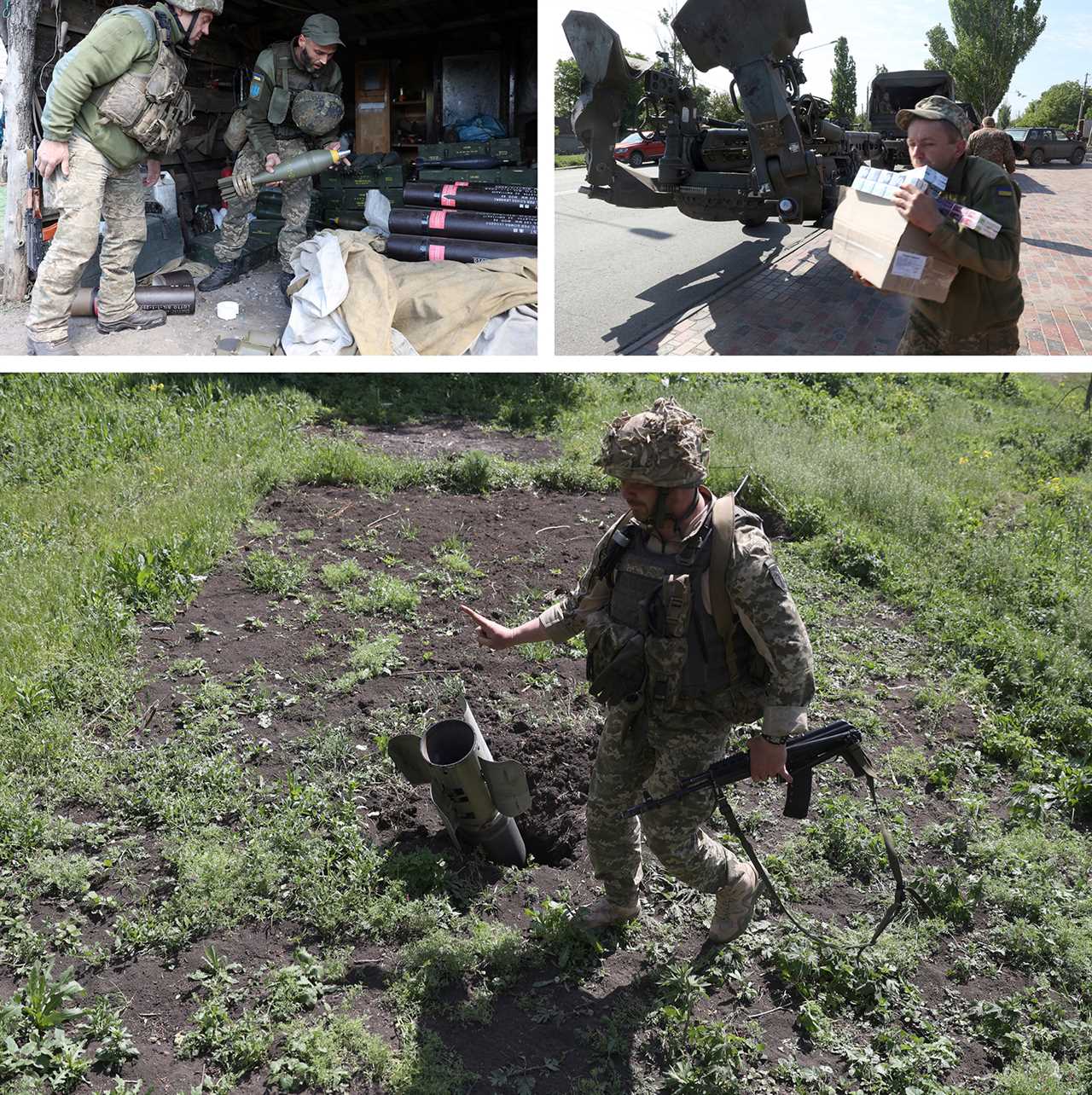
“They work beautifully. They have the precision of a sniper rifle while firing a 155mm shell,” he said, listing three instances when he said the weapon allowed his artillerymen to strike the Russians. “Their range is much greater than our own weapons and we can hit their positions, supply lines, and munitions depots farther away.”
The M777s handiwork was on display earlier this month, in the town of Bilohorivka. There, as Russian forces attempted to cross the Seversky Donets River, the Ukrainians hit them with a devastating artillery barrage that included their own Soviet-era artillery systems and the American howitzers. More than 400 Russian troops and 70 tanks and armored vehicles are believed to have been lost in the attack, according to Haidai and ISW analysis.
Indeed, the new weapons are having an effect. The Ukrainian Armed Forces wrote on Facebook Saturday that CAESAR howitzers had been used to destroy two Russian tanks, two armored personnel carriers, and a truck carrying ammunition.
But it’s still not enough to push back the Russian advance.
The Biden administration this week signaled that it may soon send Ukraine advanced, long-range rocket systems that would help Ukraine strike Russian targets from a greater distance. The decision is not yet final and the White House has had concerns about sending Ukraine weapons that can fire munitions with a range of up to 190 miles, far enough to reach well beyond the Russian border.
Biden himself told reporters Monday that he would not send Kyiv weapons systems capable of reaching Russian territory. But U.S. officials have told POLITICO that they are likely to address that issue by sending rockets that can reach 20 to 45 miles, further than the shells fired by the M777 howitzers, which have a range of about 15 miles.
The arrival of NATO weapons has Ukraine talking more about offense than ever.
“Every day we are getting closer to when our army will surpass the occupiers technologically and by firepower,” Zelenskyy said in his Saturday night address. “Ukraine will take back everything that belongs to it. ... And it’s just a matter of time. Every day at this same time, the time until liberation grows shorter.”

A long, bloody summer
Some cautioned it’s too soon for that type of talk.
“We need at least a couple more months to prepare our troops, to train them to properly handle Western weapons,” Haidai said. “Then we will be able, in principle, to go on the offensive, to capture a village here and there, put a battalion there.”
Haidai and several soldiers told POLITICO it is reasonable to think Ukraine might be ready to make a push against Russian forces by mid-summer, following a flood of U.S. and other Western weapons into the country.
But to ensure their success, air defense systems are urgently needed. Russia has increased its use of airpower in recent weeks, launching devastating attacks on Donbas cities, crucial infrastructure beyond the frontline, and military installations — while also sowing terror among the local population caught in the crossfire.
“On the ground, the Russian occupants are not as successful as they hoped, but in the air, they can destroy us,” said Kramatorsk Mayor Oleksandr Honcharenko. His office these days — underscoring the danger posed by airstrikes — is in a basement, behind sandbagged windows meant to keep him and his staff safe.
Kramatorsk was home to some 150,000 people before the war. After enduring shelling and street battles between Ukrainian troops and Russian forces in 2014, it rebounded and became a hive of cultural and community activity, as well as a main administrative center for the Donetsk region.
Today, only 55,000 residents remain, Honcharenko said, and it is used as a strategic military hub. Sitting on a key highway south of its twin city Slovyansk, Kramatorsk has come under attacks from the air since the first moments of Putin’s invasion; four Russian cruise missiles struck the military airport there just before 5 a.m. on Feb. 24. Air raid sirens wail day and night and most residents have fled; much of the traffic coming and going is military vehicles.
“If we could shoot down more of their planes and rockets we will be able to win,” Honcharenko said.
Ukraine actually has had relatively good success in the air and kept Russia from establishing total dominance, as Ukrainian MiG-29 pilot “Juice” told POLITICO. This has allowed Kyiv to move troops and weapons from the West to the eastern front without serious concern for their destruction.
Over the course of a week, POLITICO observed dozens of convoys bringing in weapons by road to the Donbas. Among them were infantry fighting vehicles and battle tanks, Soviet-era multiple-launch rocket systems, including Grad, Smerch and Uragan, as well as Tochka-U short-range ballistic missile systems and an S-300 long-range surface-to-air missile system. Hundreds of soldiers were seen being transported in buses, military trucks, SUVs and armored troop carriers. Dozens of pontoon bridges for river crossings were hauled in.
Ukrainian SU-25 ground attack jets were also seen daily, zipping just above the tree line to strike their Russian targets before circling back.
But along the rough, serpentine roads of the Donbas, evidence of Russia’s destructive reach was everywhere. Thousands of artillery impact craters dot the landscape, giving it a lunar effect. The tail fins of rockets jut out from fields of golden sorghum and green barley, like menacing signposts warning of danger ahead. Plumes of black smoke, evidence of active fighting, rose in every direction.
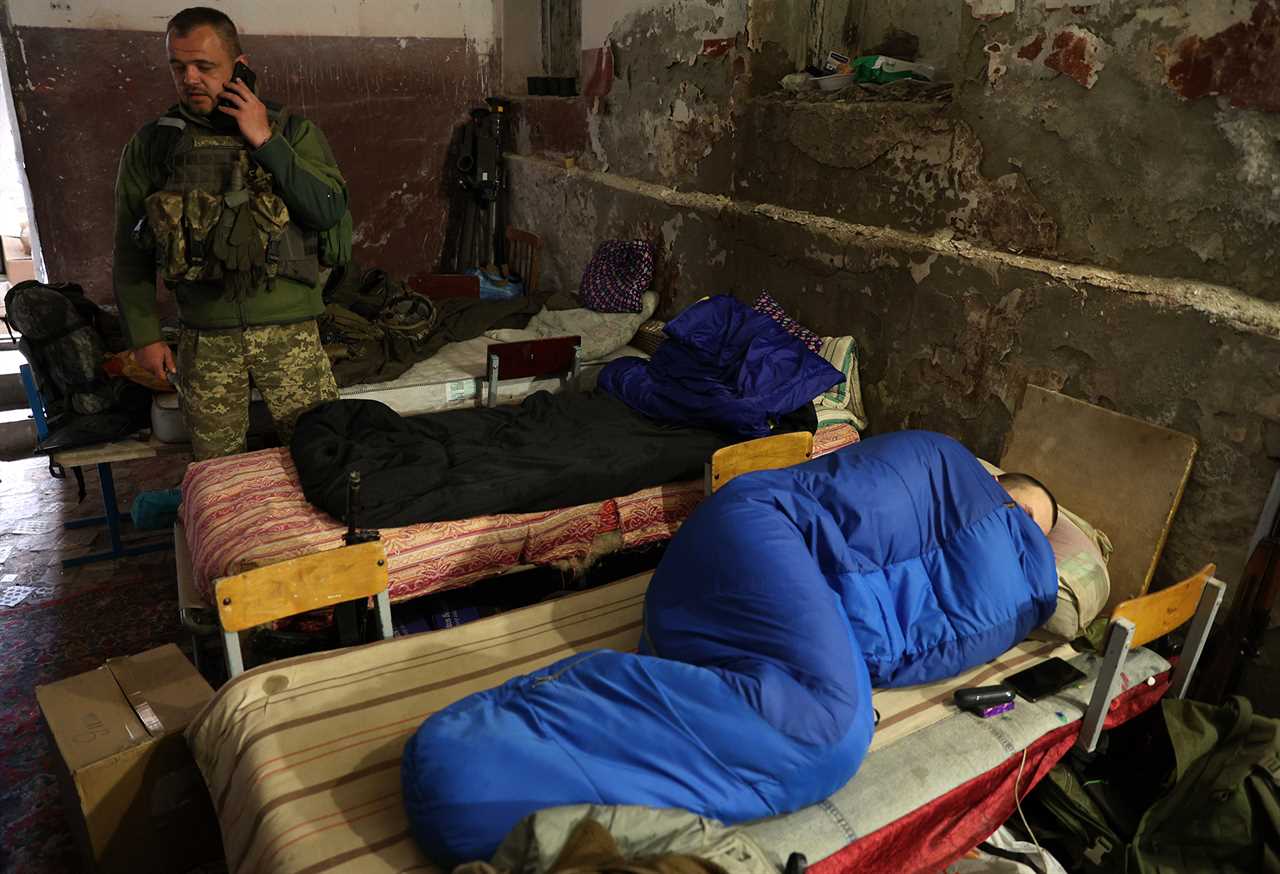
An explosive ‘welcome message’
When POLITICO arrived at another Ukrainian position 10 miles south of the strategic city of Izyum, a salvo of Russian rockets came crashing down, and soldiers ran for cover in a cellar lined with shelves of pickled vegetables and sprouting potatoes, some of the last vestiges of the farmhouse’s former residents.
The unit there operates closer to the frontline than the Gvozdika howitzer crews and is in charge of several 120mm mortar systems. The enemy is just a mile or so in front of them and bearing down, but has struggled in recent days to advance further, hence the unrelenting artillery barrages, soldiers said.
Much of their time is spent underground, hunkering down and waiting for a break in the attacks to respond with their own firepower. Surrounded by concrete and dirt in these dark and unventilated dugouts, they drink sugary coffee, crack crude jokes about their Russian enemies, and play video games on their phones to pass the time.
They also trade stories about close calls they’ve had in past rocket attacks. Stas, a young soldier who quipped that the rocket attack was a “welcome message” to POLITICO from the Russians, played a video on his phone of a close call he had a week ago when Uragan missiles exploded in the garden mere yards away.
But Oleksiy, a 38-year-old artilleryman from Donetsk, the Russia-controlled stronghold in the heart of the region first occupied in 2014, said it’s not safe even in the cellar. “They’ve destroyed our other ones. Our whole position is being subjected to massive artillery attacks every day,” he said.
Above ground 20 minutes later, Volodymyr, a 58-year-old soldier from Dnipro, gestured to the remnants of a summer kitchen, a chicken coop and an adjacent cellar that were destroyed days before in a hail of exploding shells.
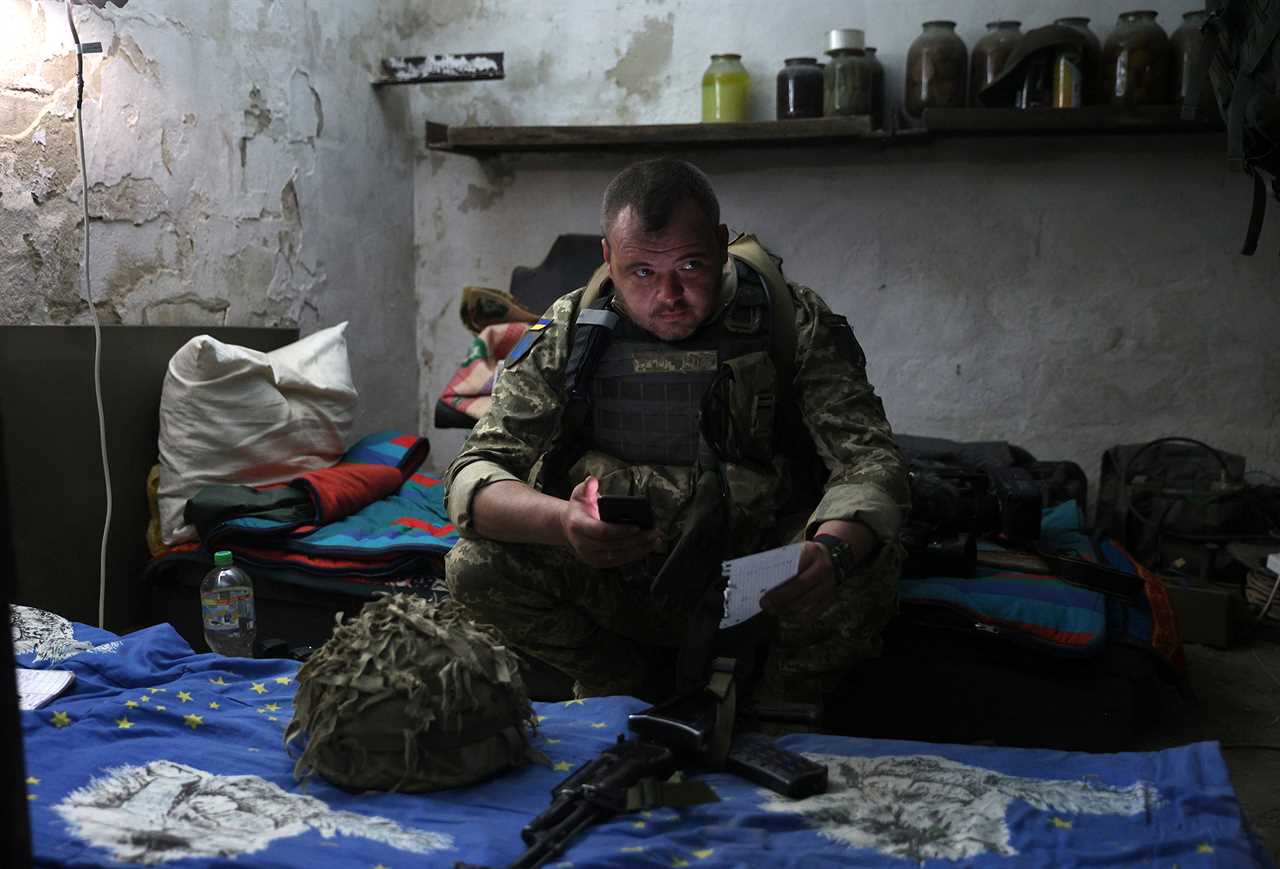
Roman, the unit’s 37-year-old commander, said the barrages were a sign of the Russians’ frustration. After pushing through Izyum weeks ago, their advance has slowed to a crawl. “We fell back three times since the battle began, but for the past two weeks, the front has been mostly static,” he said. “But the day before yesterday it was hot.”
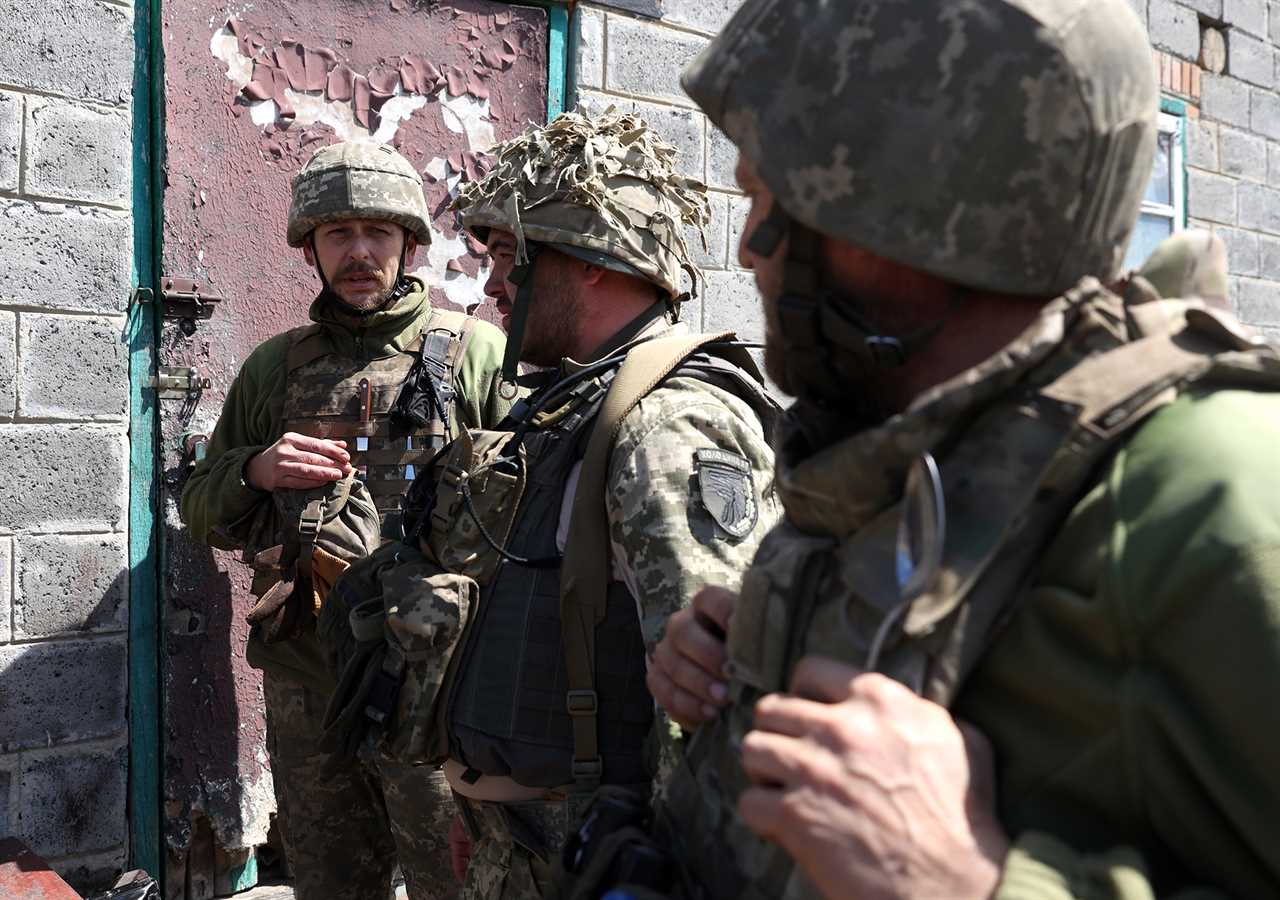
Oleh, a programmer from western Ukraine who joined the fight on Feb. 24, professed not to remember how old he was. “The only measure of time that matters is how many days we’ve been fighting this war,” he said, taking a long drag on a cigarette as another Russian salvo thudded across the field.
“They’re angry,” he said.

----------------------------------------
By: Christopher Miller
Title: 'They are carpet-bombing us': Ukrainian troops are getting pounded as they await heavy weapons from the West
Sourced From: www.politico.com/news/2022/06/01/ukraine-war-russia-donbas-weapons-00036156
Published Date: Wed, 01 Jun 2022 03:30:00 EST
Did you miss our previous article...
https://consumernewsnetwork.com/politics-us/cryptocurrency-mining-moratorium-stalls-in-new-york-state-senate






